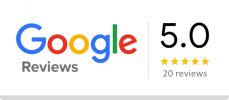When it comes to online visibility, few things matter more than your website’s performance. Fast, smooth websites don’t just create a better experience for users, they also tend to appear more prominently in search results. Let’s explore why that is and how you can optimize your website for better performance.
The Link Between Performance and Rankings
Search engines aim to deliver the best possible experience for users. That means they prioritize sites that load quickly, respond smoothly, and function reliably across devices. If your site is slow or clunky, even the best content might not rank well.
Speed affects bounce rates. If visitors leave your site before it loads or within a few seconds, it signals that your site may not be meeting expectations. Search engines monitor these behaviors and may rank your site lower as a result.
Another reason speed matters because it affects engagement. Faster websites lead to longer session durations, higher page views, and more conversions. This positive engagement loop supports your visibility goals and helps reinforce your investment in seo and google ads.
Core Web Vitals Explained
Google introduced Core Web Vitals as a key part of evaluating site experience. These metrics include:
Largest Contentful Paint (LCP): Measures how long it takes for the main content to appear. Aim for under 2.5 seconds.
First Input Delay (FID): Gauges how quickly users can interact with the site. Under 100 milliseconds is ideal.
Cumulative Layout Shift (CLS): Tracks how stable your layout is as it loads. A score of less than 0.1 is preferred.
Improving these vitals not only benefits users but also contributes to higher rankings.
Mobile Optimization Matters
With mobile usage dominating internet traffic, your site must be mobile-optimized. A responsive design that works well on any screen size is no longer optional, it’s mandatory.
Mobile performance affects both user experience and visibility. Sites that aren’t optimized for mobile often load slowly, display incorrectly, or become difficult to navigate. This frustrates users and results in poor engagement.
Google uses mobile-first indexing, which means it primarily evaluates the mobile version of your site for indexing and ranking. A site that works great on desktop but poorly on mobile could still be penalized.
Hosting and Technical Factors
Behind-the-scenes technical choices impact your website’s performance. A good web host is crucial. Poor hosting can result in downtime and slow speeds, especially during traffic spikes.
Use a content delivery network (CDN) to reduce latency by distributing content across multiple servers around the world. Implement caching to store content locally and reduce the need for repeated requests to the server.
Minimizing HTTP requests, combining files, and using asynchronous loading techniques can also improve speed significantly.
Clean Code and Image Optimization
A fast website starts with clean code. Avoid bloated templates and unnecessary scripts. Use modern development practices and tools to streamline how your site runs.
Large images are often a major performance bottleneck. Use compressed formats such as WebP and resize images appropriately. Also consider lazy-loading techniques, which defer loading images until they’re needed.
Website builders and content management systems (CMS) like WordPress, Wix, or Squarespace offer image optimization plugins that help automate these improvements. It’s also important to select your website building platforms wisely to support these enhancements effectively.
Avoiding Third-Party Bloat
Third-party tools such as chat widgets, social sharing buttons, and tracking scripts can slow your website down. Every additional script increases the number of HTTP requests your site must make, which can drag down load times.
Audit your site regularly to remove unnecessary third-party integrations. Only keep the ones that truly add value to the user experience.
Security Enhancements
Security impacts trust, and trust influences engagement. One of the simplest but most essential ways to improve your website’s security is by installing an ssl certificate. This ensures that all data transferred between your users and your server is encrypted.
Sites without HTTPS are often flagged as unsafe and may be demoted in search results. Secure a website to help build user confidence and ensure compliance with browser standards.
Monitoring and Continuous Improvement
Use tools like Google PageSpeed Insights, GTmetrix, and Lighthouse to monitor your site’s performance. These tools analyze different aspects of your site and offer suggestions to improve speed and functionality.
Remember, optimization isn’t a one-time fix. Websites evolve new content, new tools, new code. Performance monitoring should be part of your regular website maintenance routine.
Integrating schema markup can further support visibility by helping search engines better understand your content structure.
Real-World Results
Businesses that focus on performance see measurable improvements. For example, reducing a page’s load time from 4 seconds to 2 seconds can significantly increase conversions.
A local service provider that improved its website’s load speed by 40% saw a 25% rise in form submissions. A product-based company using an eCommerce platform enhanced mobile responsiveness and cut bounce rates in half.
Incorporating performance best practices can also improve the ROI from your marketing efforts. Faster-loading pages reduce friction in the conversion funnel, making campaigns more effective.
Beyond the Basics: Strategic Considerations
Performance optimization should be approached strategically. Think of it as part of a larger effort to ensure your site delivers results. Whether you’re trying to generate leads, sell products, or build brand awareness, speed and functionality matter.
Here are a few more considerations:
- Choose the right platform based on your goals.
- What should you include in your website to maximize value? Elements like fast navigation, mobile-friendliness, and security features are key.
- Understand the cost implications of adding high-performance features or switching hosting providers.
All of these choices contribute to your site’s long-term success and its ability to support your business goals.
If you’re operating in Auckland, working with a local website design auckland company familiar with performance best practices can offer a strategic advantage.
Final Thoughts
Great performance is no longer a nice-to-have, it’s a necessity. It builds trust, supports better engagement, and contributes to higher visibility. In a competitive market like Auckland, you need every edge to stand out.
Your performance efforts should be aligned with your long-term goals. When your site is fast, secure, mobile-friendly, and well-structured, it sets the stage for success not just in visibility, but also in user satisfaction and business growth.
If you’re unsure where to begin, consider partnering with a trusted expert or a development team that understands the connection between site performance and success especially if you’re seeking professionals seo auckland company or digital marketing auckland company.
Whether you’re launching a new website or improving an existing one, performance is one area where consistent effort pays off.

